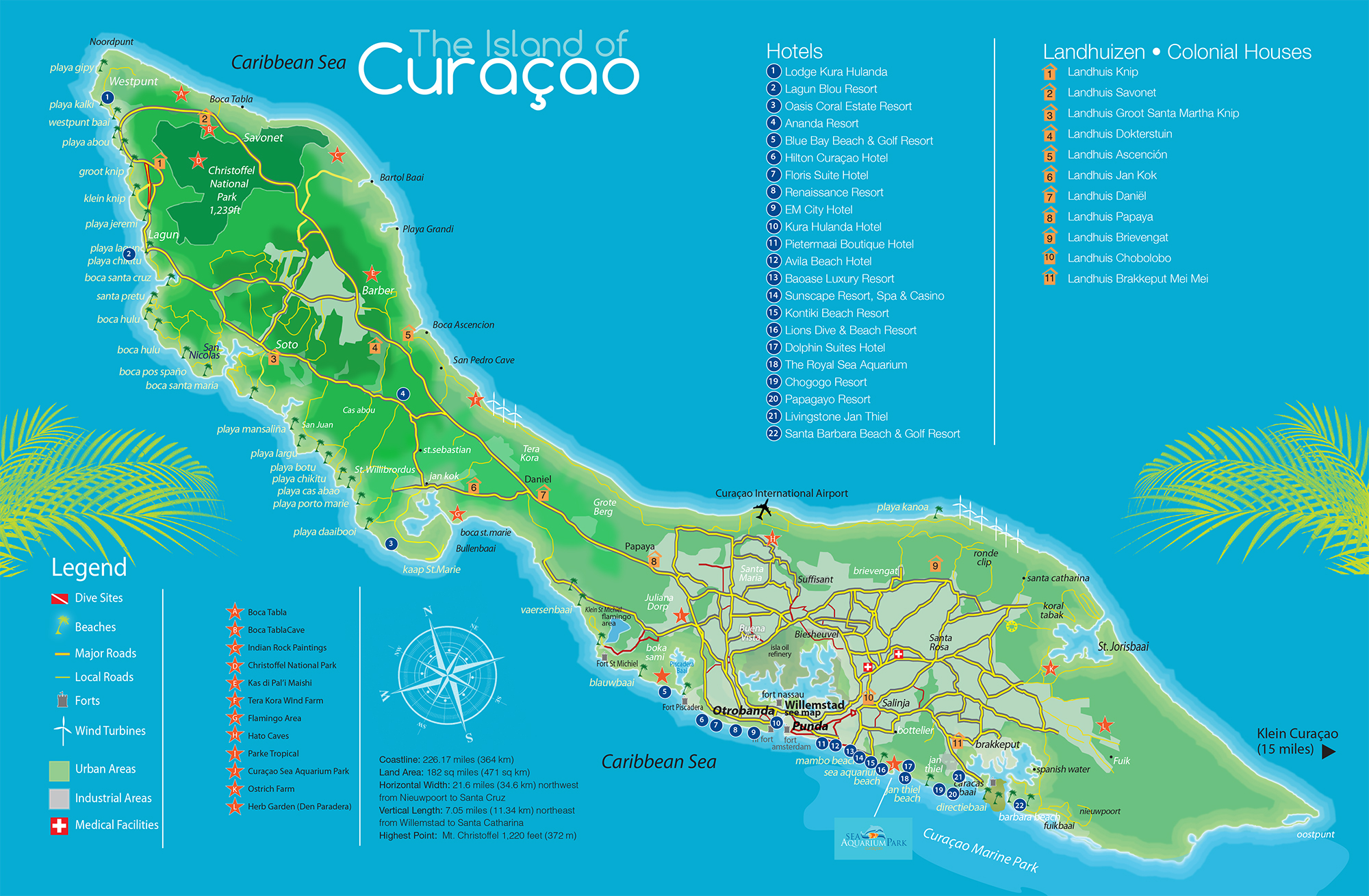Curacao is a hidden gem in the Caribbean, vibrant with colorful architecture, stunning beaches, and a rich cultural heritage. If you’re dreaming of a sun-soaked getaway, this charming island offers everything from diving in crystal-clear waters to exploring historic towns. In this complete guide, we’ll delve into the Curacao tourist map, uncovering the best attractions, travel tips, and my personal experiences to help you make the most of your trip.
Why Visit Curacao?
Before diving into the specifics, let’s explore why Curacao should be on your travel radar. This island is renowned for its:
- Stunning Beaches: With over 35 beaches, find your slice of paradise.
- Diverse Culture: Enjoy a blend of Dutch, Spanish, and Caribbean influences.
- Vibrant Underwater Life: Dive or snorkel in some of the best coral reefs in the Caribbean.
- Rich History: Visit historic Willemstad, a UNESCO World Heritage Site.
Understanding the Curacao Tourist Map
When exploring Curacao, a well-structured tourist map is your best companion. Let’s break down the essential locations and practical routes to take.
Key Areas Covered in the Curacao Tourist Map
Your Curacao adventure begins with familiarizing yourself with its major regions:
- Willemstad: The vibrant capital with its iconic pastel buildings.
- Westpunt: Home to stunning natural parks and secluded beaches.
- Otrabanda: Known for local markets and cultural experiences.
- Jan Thiel: A popular area with resorts, restaurants, and nightlife.
Comparative Overview of Tourist Attractions
| Attraction | Location | Type | Rating |
|---|---|---|---|
| Christoffel National Park | Westpunt | Nature Reserve | 4.8/5 |
| Willemstad (Punda & Otrabanda) | Willemstad | Historical Site | 4.7/5 |
| Klein Curacao | Off the coast | Island Excursion | 4.9/5 |
| Shete Boka National Park | North Coast | Natural Park | 4.6/5 |

Top Attractions in Curacao
1. Willemstad
The colorful capital city of Curacao, Willemstad, is a UNESCO World Heritage Site. You can’t miss its iconic Handelskade waterfront with bright facades. My first stroll through this area was magical; the colors alone felt like a painting come to life. Be sure to visit:
- Queen Emma Bridge: A floating bridge connecting Punda and Otrabanda.
- Floating Market: Experience local culture and fresh produce from Venezuela.
2. Christoffel National Park
If you’re a nature enthusiast, Christoffel National Park is a must-visit. Here, you can hike to the island’s highest point, Mount Christoffel, offering breathtaking views of the coastline. I embarked on an early morning hike, and the sunrise over the hills was worth every step!

3. Klein Curacao
This tiny uninhabited island is perfect for a day trip. With its pristine beaches and crystal-clear waters, it’s ideal for snorkeling. I vividly remember lounging on the beach, feeling like I had my own private paradise.
4. Shete Boka National Park
Witness the raw beauty of the Caribbean at Shete Boka. This park features dramatic coastlines, blowholes, and sea turtles. Watching the waves crash against the cliffs is an experience you won’t soon forget.

Travel Tips for Exploring Curacao
Getting Around the Island
Curacao is relatively easy to navigate, but consider these tips:
- Rent a Car: The best way to explore at your own pace.
- Local Buses: Economical, but schedules can be unpredictable.
- Bike Rentals: A fun way to see Willemstad and nearby beaches.
Best Time to Visit
The ideal time to visit Curacao is from December to April when the weather is pleasant and dry. I visited in late March, and the temperatures were perfect for beach lounging and exploring.

Local Cuisine to Try
No trip to Curacao is complete without savoring its local cuisine:
- Keshi Yena: A delicious stuffed cheese dish.
- Pigeon Pea Soup: A hearty local favorite.
- Seafood: Fresh and abundant; try the grilled fish at local fish shacks.
Accommodation in Curacao
Curacao offers a variety of accommodations, from luxury resorts to budget hostels. Here are a few recommendations:
Top Hotels and Resorts
- Renaissance Curacao Resort & Casino: Excellent amenities and a stunning sunset view.
- Avila Beach Hotel: A charming beachfront property with historical significance.
- Sunscape Curacao Resort: Family-friendly with plenty of activities.

Destinations Highlights and Hidden Gems
Snorkeling and Diving Spots
Curacao is a diver’s paradise. Some top spots include:
- Blue Room: A cave with stunning blue waters and marine life.
- Director’s Bay: Great for beginners with calm waters and rich biodiversity.
Local Markets and Shopping Areas
For a taste of local life, visit:
- Plaza Bieu: A local food market bustling with flavor and culture.
- Riffort Village: A shopping center with a historical backdrop.

Pros and Cons of Visiting Curacao
Pros
- Beautiful beaches and warm climate.
- Diverse activities ranging from relaxation to adventure.
- Rich culture and history to explore.
Cons
- Can be expensive compared to other Caribbean islands.
- Limited public transportation options.

Frequently Asked Questions
1. What is the best way to explore Curacao?
The best way is to rent a car, allowing flexibility to explore the island’s hidden gems.
2. Is Curacao safe for tourists?
Yes, Curacao is generally safe; however, like any travel destination, always exercise common sense and stay aware of your surroundings.
3. What currency is used in Curacao?
The official currency is the Netherlands Antillean Guilder (ANG), but US dollars are widely accepted.
4. Are there all-inclusive resorts in Curacao?
Yes, several resorts offer all-inclusive packages that provide meals and activities for a fixed price.
Conclusion
Curacao is a stunning island with endless adventures waiting to be discovered. Whether you are lounging on the beach, exploring vibrant neighborhoods, or diving into the rich marine life, this island promises an unforgettable experience. With your Curacao tourist map in hand, you are set to uncover the island’s best-kept secrets.
So pack your bags, grab your shades, and get ready for an extraordinary journey in Curacao!